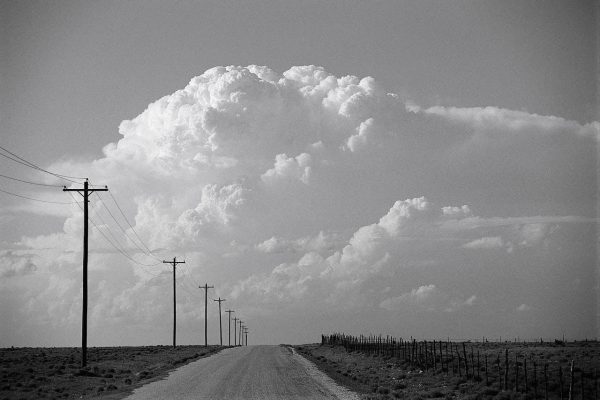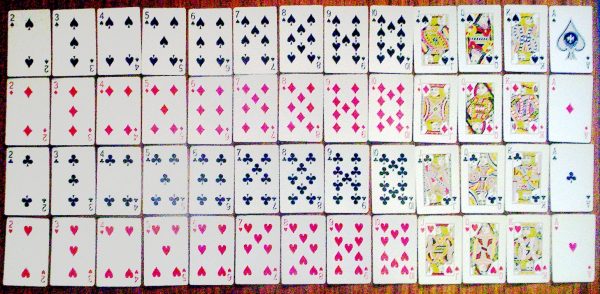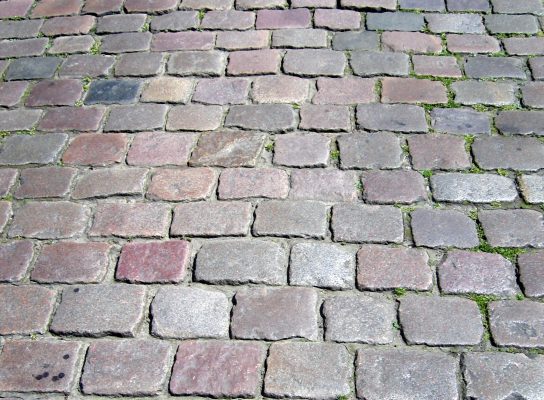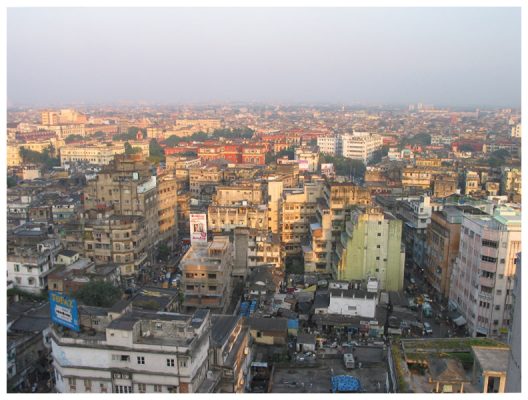The title of my essay has been stolen from another essay written in 1919.[1] In this older work, the reader is introduced to a man of ‘mid-life’ assuming the pseudonym, ‘Vincent,’ a sufferer of agoraphobia who has decided after ‘some time’ to ‘commit to writing’ some observations of his condition. Over the next five pages, Vincent rewards the reader with a detailed and evocative account of the strange maladies he undergoes in his daily life as a victim of this spatial anxiety.
To begin with, we are told of the likely ‘cause’ of his condition, being the murder of a childhood friend, whose throat was cut ‘from ear to ear’ and then dragged at night to the ‘bank of [a] river’. Thereafter, Vincent suffers from a morbid fear of being alone. In addition, he was also ‘afraid to go to the barn in the day time, and suffered when put to bed in the dark’. This childhood trauma sets in place a troubled relationship with the world, exacerbated by an already nervous and sickly temperament. Soon after, the agoraphobia begins. His first encounter comes at the top of a hill. One evening, he tells us, he experiences the incipient symptoms that will mark his adult life more generally.
In time, this rupture of his security increases to the world around him, to the extent that even ‘[u]gly architecture greatly intensifies the fear’. Certain props afford him comfort. Darkness, snow, stormy days and any other means to veil the horror of the world from his eyes allow Vincent to find his way in the world, as he tells us rather glibly: ‘On such days I make it a point to be out and about the town’.
But this anxious relationship to places is not limited to a localised event. For Vincent, the agoraphobia is always present even when at home. In one especially incisive passage, he remarks: ‘I enter a home and sit in an arm-chair chatting with my friend; I soon find myself gripping the arm of the chair with each hand. My toes curl in my shoes, and there is a sort of tenseness all over my muscles’. This terror of domestic space defies reason and logic, placing Vincent in the realm of those who are possessed by unseen forces.
At the end of his reflections, the prognosis does not look good for Vincent. Faced with the prospect of crossing a bridge, he would sooner ‘face a nest of Boche machine guns’. Worse than this, he feels obliged to keep his agoraphobia hidden beneath the appearance of normality: ‘It is one of the characteristics of the victim of the disease,’ so he tells us, ‘to conceal it most cunningly’ (299). His ‘confession’, therefore, is a performance of this intimate secret, a gesture of exposure without the risk of self-effacement. Having resigned himself to the prospect of never again returning to the world devoid of ‘dark dread’, he commits himself to the anonymity of a nameless confession, a dispatch sent out to those who, like him, lead a life of secrecy and anxiety.
***
Like Vincent, I too am a victim of agoraphobia. In our shared disdain for ugly architecture, vertiginous hills and strange bodily afflictions, Vincent and I are kindred spirits, separated by time but united by neurosis. As with Vincent, it has become customary for me to adhere to a series of rituals and superstitions in order get through the world. Faced with an empty lecture theatre or a sparsely populated conference hall, I will grip the contours of the room in order to get from one point to another. There, I will seek refuge in doorways or behind a column, if one is available. Fluorescent light, which Vincent may have been lucky enough to have avoided owing to its increased usage at the end of the 1920s, is my anathema. In the absence of dark glasses, it would not be unusual for me to feel as though my body were about to give way should I find myself in the midst of a brightly lit supermarket.
My episodes are endless. From the aisles of Ikea to the mountains of Montana, my psycho-geographical history is marked by phobia. Each event plots a gradual distancing from the world of unfamiliarity and a slow immersion in the supernatural. How did Vincent and I get this way, inhabiting a vampiric realm, which must seem an odd affectation to anyone who has not been touched by agoraphobia? In fact, far from a radical departure from the world of ‘normality’, agoraphobia seems to me an amplification of facets of life that are already implicit in experience more generally. One of these facets is the bodily basis of being a self.
***
What is a human body? It is more than a homogenous mass of materiality, this is for sure. It is not, for example, simply a vessel or mechanical unit that allows us to get from one point to another. Instead, it is the very basis for how we understand and experience the world. The world in which we find ourselves is in large a fleshy world thanks to the fact that it is shaped by the way our bodies experience. Likewise, to understand the experience of melancholy, sorrow or elation means not only having an abstract concept of these moods, but to experience them in corporeal terms. Our bodies, in short, are what animate our experience of being a self.
Ordinarily, we tend not to give too much thought to the fact that we are bodily subjects. It is something that is overlooked or otherwise taken for granted. And this is for good reason, too. Our identity as human beings tends to be based on the idea that our bodies need not be interrogated as separate things. There are, nevertheless, moments in our experience where the body can become visible to us as an obstacle or something detached from our sense of self. Think here of the experience of illness, fatigue, ageing or pain. In each case, these states put us in a different relation with our bodies. When ill, it is as though the body has betrayed our intentions, becoming a divisive presence that separates us from the world. The same can be said of pain: the pain is experienced not as something belonging to ‘me’, but to the localised part of my body affected.
This sense of the body as somehow out of joint in a person’s sense of self is central to the experience of agoraphobia. In fact, I am prepared to say that agoraphobia is less an anxiety disorder concerning the dreadful quality of space and more an issue concerning the strange maladies of the body. Only instead of illness or ageing as being the main point of division, it is the experience of the body as fundamentally alienated that is at stake.
What is striking about the adventures of Vincent is the lucidity of his reflections. At no point is he so lost in the phobia that it prevents him from actually writing about it. And this writing assumes a definite purpose. For him, the human body has become a kind of encoded tablet to be deciphered. His body retains its presence throughout the ‘spells’. And it is precisely because the body is not annihilated by agoraphobia but preserved that Vincent finds it a strange location between something he possesses and something which possess him:
During these attacks I was entirely conscious and rational. As I remember the affliction, a sort of chill came over me—not like an ordinary chill, but a sort of ‘coldness’ that produced a very unusual sensation, or perhaps, a lack of sensation would describe it more accurately.
This conflation between rationality and the rupture of the body as a frozen relic sets in place a relationship to material identity that brings together two different experiences of the world. On the one hand, Vincent the rational, self-composed protagonist of his own neurosis retains enough control and distance to dissect his agoraphobia into a form of literary auto-diagnosis. In addition to this, he also prides himself on his status in the social world, noting with some tenderness: ‘I think I am an honest man in all essential things. My credit is good at the banks’. On the other hand, the detachment belies a relationship of absolute alienation to his body. It is a body to be examined, as though it were an object of curiosity rather than lived engagement.
More than this, it is a body that is genuinely paradoxical and a body that refuses to carry its own presence, as he writes: ‘I ride a bicycle along streets with comparative comfort where I should suffer agony were I to walk. In walking I feel less uncomfortable in passing along the street if I carry a suitcase or travelling bag—something to grip’. This reliance on props to support his journey through the world—a common trait for agoraphobes—positions the body outside of itself. For this is a body that has a greater reality in the suitcases, travelling bags, or in my case, umbrellas of the world, rather than in the human body itself. In this co-dependent relation with objects, the human quality of the body is transformed into an uncanny spectre—an apparition that masks the contingency of the flesh with the artifice of an inanimate entity.
Vincent ends his confession on a note of lamentation: ‘I see a man hobbling past my house on crutches, a cripple for life, and I actually envy him’. While his tone may strike the reader as overly self-pitying, what Vincent is describing is an aspect of experience that affects agoraphobe and non-agoraphobe alike, namely: our relation to our bodies is not simply an internal relation between ‘mind’ and ‘body’, but a relationship which determines how we experience and interpret the world. In his treatment of his body as an alien thing to be examined in a detached manner, Vincent also establishes an equally alien relationship to the world more broadly. Both body and world are conjoined together in their overwhelming strangeness.
***
As for me, I know that glass elevators that ascend beyond the tenth floor, large halls with smooth or recently polished floor, and rooms devoid of natural light are not for me. Like Vincent, what I experience in these places cannot be assuaged by the conceit of reason. We are possessed by a force that is resistant to the world of light and reason. Exposed to these places, my body loses its grip on the world —manifesting strange and contrasting symptoms that feel as though they came from another place altogether.
But there is more. Inhabiting a shadow realm between reason and unreason, Vincent and I have become—in a striking formulation from Levinas—‘merchant[s] of anxiety’, transforming the dross of our neurosis into ciphers to be translated and retranslated. Whether as a strategy of survival or a mode of understanding, the phobia that marks our lives is not without its seductive quality. With it, the contingency of this indifferent cosmos is given a meaning that is experienced first hand. Place an agoraphobic person on a bridge. For them, it is far more than the materiality linking one chunk of land with another. Instead, it assumes a metaphysical significance. In their peculiar specificity of their bodies, they have access to this significance and for this reason slowly begin to fall in love with their anxiety.
What the agoraphobe fears the most, to paraphrase Lacan, is not exposure to anxiety but the very loss of this anxiety. What is anxiety? It is certainly not a mechanical reaction to danger. Fundamentally, it is an enigma, an occult manifestation of some kind of unseen threat. But it is also a mood that gives coherence to the world. If my life is structured around a series of bridges that I cannot cross, then I am in the advantaged position of being able to contain the world into a zone of abiding familiarity. Move beyond the bridge, then it is no surprise a feeling of impending doom prevails: the bridge marks a threshold of reality and unreality.
Faced with our ambiguous relationship to the agoraphobia, Vincent and I have dedicated ourselves to the writing of this strange condition. Through this act of sublimation, the experience of agoraphobia emerges with an afterlife, now removed from the original scene of the attack. In the writing of anxiety, the physical body gains a reality that is lacking in the flesh itself. Indeed, to restore the body to life in this way means appropriating it as a map or text to piece together, until finally the unhomeliness at the heart of the agoraphobic body becomes an essential symptom that holds the home together in the first place.
[1] Vincent. 1919. “Confessions of an Agoraphobic Victim.” The American Journal of Psychology 30: 295-299.




